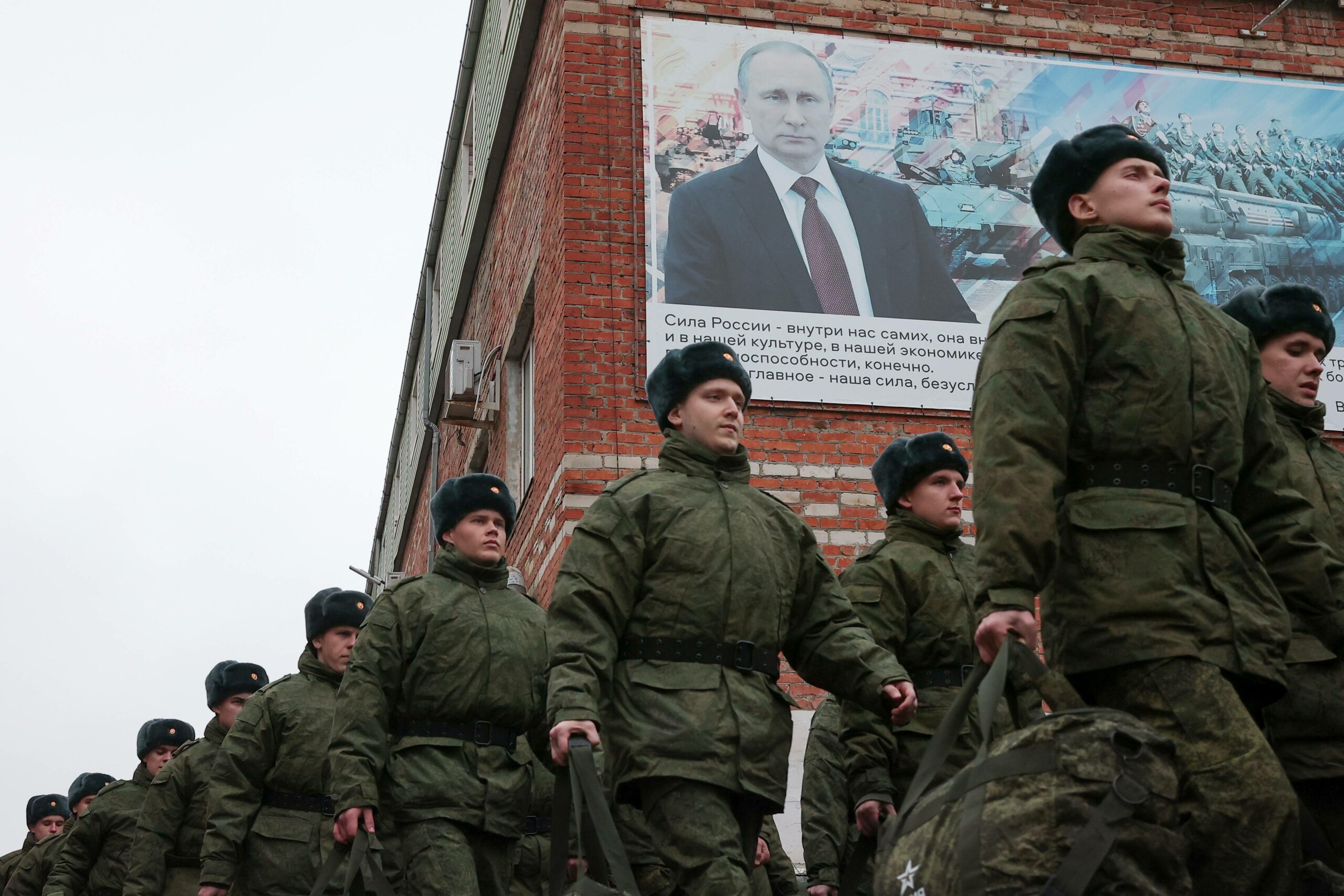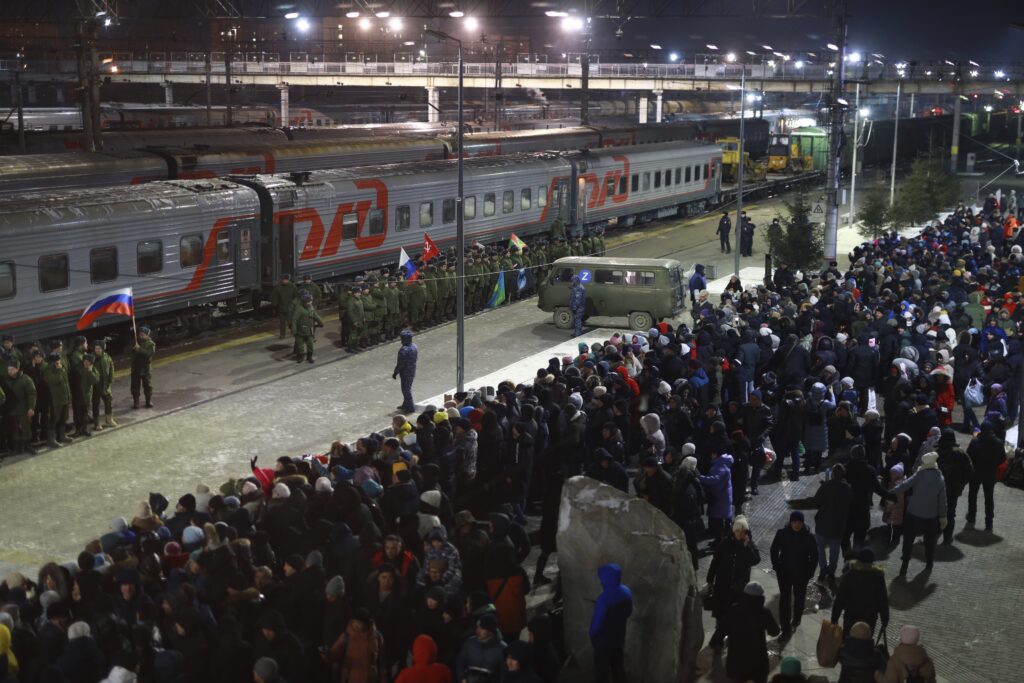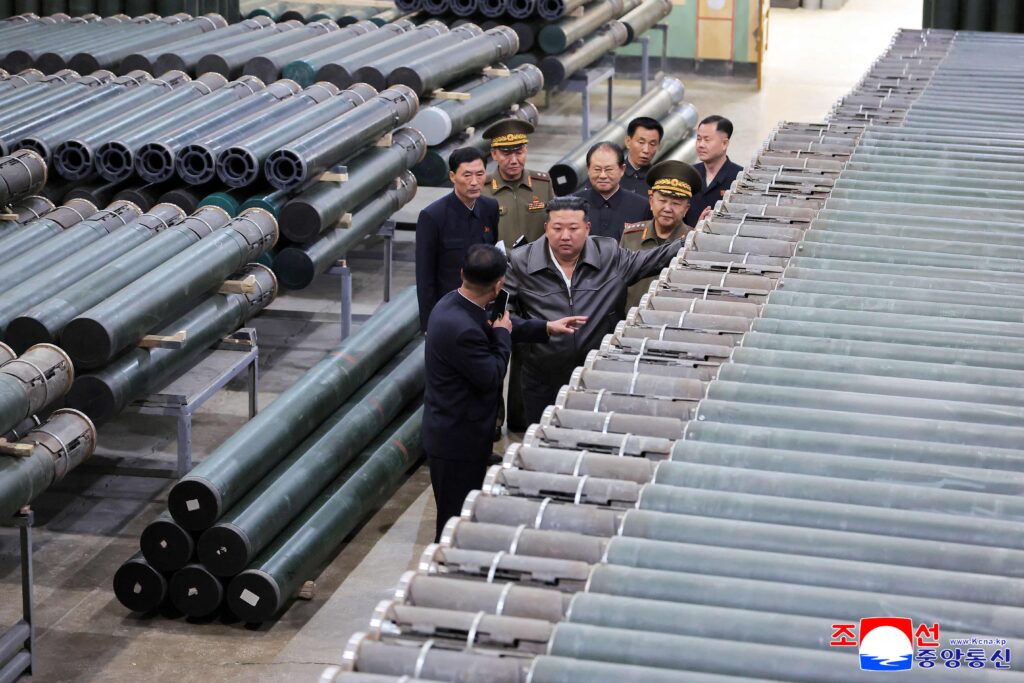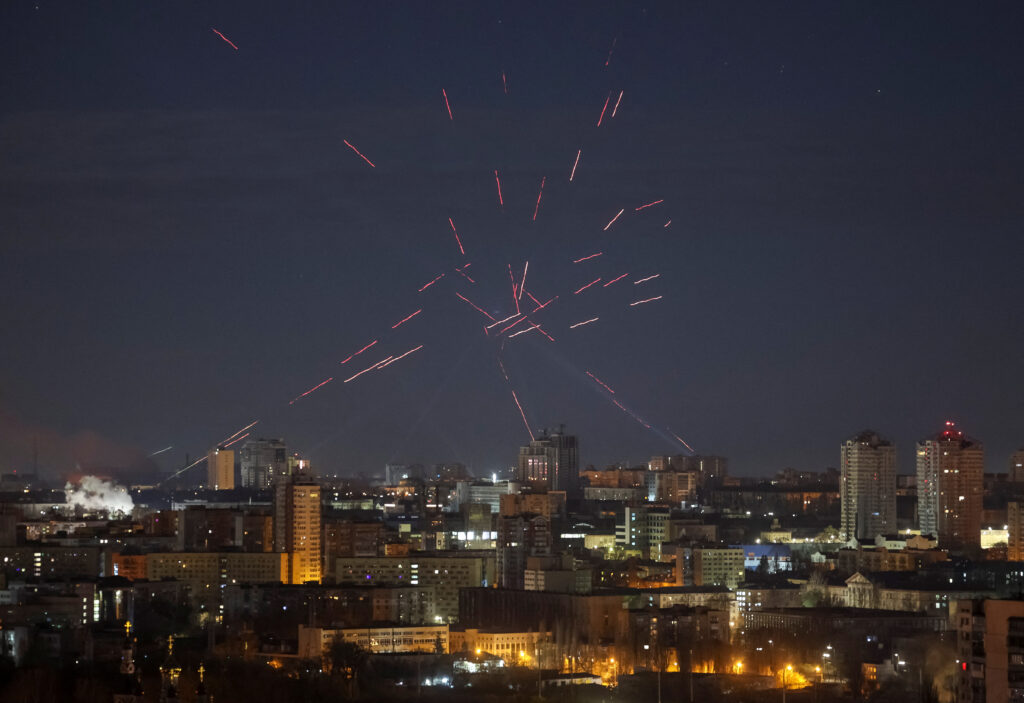Almost immediately after the «partial mobilization» of autumn 2022 ended, there was talk that the Kremlin would need a new mobilization to make up for the huge losses of soldiers and officers on the fronts of the war against Ukraine. These discussions intensified in the autumn of 2023: at that time, the recruitment of new mercenaries (or «contractors» in official terminology) seemed to be on the decline, and the announcement of a mobilization closer to the presidential «elections» was considered to be a risky, dangerous move. Expectations of mobilization in the autumn of 2023 were also fuelled by the opposition press, although it was more logical to assume that any decisions on this issue would be taken after the March vote.
And now with the presidential «elections» out of the way, the Kremlin has announced large-scale plans to increase the size of the armed forces (according to Russia’s Minister of Defense Sergei Shoigu, this year they are to be supplemented by two general armored armies and thirty formations, including fourteen divisions and sixteen brigades), reports of a slowdown in the signing of contracts have become more frequent, spring conscription has begun, but mobilization has not taken place. In the first days after the «elections» it was ‘scheduled’ for 25 March, and recently Ukrainian President Volodymyr Zelensky said it should be expected to start on 1 June. Many military analysts say the army needs hundreds of thousands of new soldiers for the next offensive, while leaks from «verified sources» suggest that at least 300,000 people will be called up.
Today we can try to make a new prediction for the 2024 mobilization, and I will again hazard a guess that there will be none, although the situation at the front remains difficult: stories of 486,000 recruits are not credible, and the lack of soldiers on the front is noted by many observers.
The 2022 mobilization brought about two types of costs: some were «partly expected» and others were totally unexpected. On the one hand, the Kremlin could not fail to understand that the growth of the army would entail significant costs. However, it is unlikely that it anticipated their true scale: until the autumn of 2022, the monthly salary of a contract soldier was 30,000- 42,000 rubles (the equivalent of 300−420 euros), and prisoners recruited by private military companies (PMCs) were allegedly paid from sources other than the state budget. It was only much later that Putin suddenly «remembered» that this recruitment of convicts had cost the state more than 200 billion rubles.
Meanwhile, in order to prevent social unrest during the mobilization, the authorities announced a new minimum monthly pay of 195,000 rubles (about 1,959 euros) for a contract soldier and had to bring old soldiers up to the same level as newcomers. In addition, it became clear that the massive losses that the Russian armed forces suffered in Ukraine were forcing the government to splurge on «funeral expenses», which by this time could exceed 10 million rubles per fallen serviceman (we described this problem in our article on Putin’s «deathnomics».) For the first time since the time of the Streltsy regiments in the 17th century, the treasury began to spend seriously on payments to the rank and file soldiers. Parenthetically, under Peter the Great the salary of a private after all deductions was just over 5 rubles a year, and during the reign of Alexander I — 10 rubles, which in terms of the price of silver is equivalent to today’s 12,000 and 25,000 rubles (120 or 250 euros). In Soviet times, as we know it, a private was paid three rubles a month until the end of the 1980s. So this change is unprecedented by Russian standards. On the other hand, one of the side effects of the mobilization in the year following 21 September 2022 was the flight of nearly a million people abroad, which led to a severe shortage of labor (not catastrophic in itself, but critical for the Russian economy, which is extremely inflexible in terms of employment). Combined with the growing demand for labor in military plants, the labor shortage created by the mobilization became a national problem at a time when most companies had not only forgotten, but had never known what it meant to increase productivity through technological innovation. And while the direct costs of mobilization were easily dealt with by the authorities, the secondary costs are still far from being overcome.
Therefore, the Kremlin will look for other ways to maintain the combat capability of the troops, even though the direct costs to the federal authorities of the new mobilization do not look catastrophic: after all, the aim is not to double the size of the army, but rather to replace the losses incurred and to strengthen it somewhat in critical areas of the front. Therefore, the total number of personnel will increase by «only» 100,000−150,000 people, the cost of which (together with the provision of everything necessary) will not exceed 25−30 billion rubles per month, or about 300−350 billion rubles per year (3-3,5 billion euros). This amount is small — it accounts for the mere 3% of the total expenditure of the Ministry of Defense planned in the 2024 budget. However, mobilization could have a number of negative consequences for the authorities, as it could seriously undermine the almost universal apathy towards the war that has returned to Russian society in 2023. Moreover, the announcement of mobilization would clash with reports of the successful development of offensive operations by Russian troops (September 2022 brought completely different news) and would probably increase the radicalism of statements by NATO representatives, something Moscow hardly covets. In this context, Shoigu’s statements about increasing the size of the armed forces seem more like strategic intentions, the realization of which is planned for the whole of 2024 (or even for a significant part of 2025), which is seen in the Kremlin as a year of accumulation of forces and resources, and not at all as the time of a decisive break in the war. It is Europe that is now concerned about how to ensure the continuity of NATO policy in case Trump returns to power in the United States, while Moscow appears to be preparing for a prolonged standoff. The Russian authorities intend to monitor the development of the political situation in Ukraine itself after the end of President Volodymyr Zelensky’s term and the announcement of Ukrainian mobilization, as well as the development of the international agenda, which will be determined by the results of the European Parliament elections, the NATO anniversary summit in Washington and the vicissitudes of the US election campaign.
In the third year of the war, however, it is beginning to appear that the commercialization of the military and the growth of military spending have not only positive but also negative consequences. On the one hand, the increase in funding for the military-industrial complex and payments to military personnel certainly stimulate the economy (according to the most conservative estimates, a third of GDP growth in 2023 was provided by these injections), and the huge losses of military equipment make it possible, as Putin recently stated, to keep the defense industry busy with orders for another 5−10 years. On the other hand, a certain financial dissonance has emerged by mid-2024: whereas two years ago, with an average Russian salary of 62,000 rubles (620 euros), almost 200,000 rubles (2,000 euros) seemed like a lot of money, today it is increasingly possible to earn 100,000 rubles (1,000 euros) or more by working at a military factory rather than risking one’s life at the front. Having unleashed a spiral of rising incomes, the Kremlin has found itself in a pickle of having to substantially increase soldiers’ allowances soon, which is particularly tough given how unpopular the idea of mobilization is.
For the time being, the authorities intend to make do with palliative measures, and above all with the rapid growth of regional lump-sum payments due on signing a contract (the federal payment remains at the level of 195,000 rubles or 1,950 euros): while in the first months after mobilization in 2022 they ranged from 20,000 to 200,000 rubles (or between 200 and 2,000 euros), in recent months this amount has been raised twice in a short period of time in Krasnodar Krai, rising from 300,000 to 1 million rubles (from 3,000 to 10,000 euros) In St Petersburg, a contract soldier is now offered 905,000 rubles (9,050 euros), in Rostov oblast’ — 700,000 rubles (7,000 euros), in Nizhny Novgorod oblast’ — 500,000 rubles (5,000 euros), and in most other regions the figure is between 200,000 and 400,000 rubles (between 2,000 and 4,000 euros). What is more, since the beginning of the year this figure has increased to a greater or lesser extent almost everywhere in the country.
In addition, many federal enterprises have become involved in providing financial support to recruits, recruiting potential volunteers, paying them substantial salaries comparable to those of conscripts, and retaining their payments in full for the entire period of service in case it «suddenly» turns out that the new employee has decided to «serve the motherland.» All these expenditures are made without formally involving federal budget funds, which allows them to be handled without undue drama (even if all recruits were paid 1−1.5 million rubles each, it would take 250−300 billion rubles, or less than 10% of the transfer from the federal budget to the regions in 2024, to recruit 200,000 people). However, they do not solve the main problem, which is the shortage of manpower, and, thus, it is the indexation of allowances by 40−60% (which will cost the treasury an estimated 400 billion rubles a year — a lot of money, but manageable still) that will be the indicator of whether the authorities intend to continue commercial recruitment or lean in favor of mobilization.
At the same time, it appears that the Kremlin has decided against financing the budget deficit caused by significant military spending by borrowing and issuing debt, and is now focusing on tax reform, which Putin vaguely mentioned in his address to the Federal Assembly. If the recently announced parameters of the reform are correct, and it involves raising the top income tax rate to 20 per cent, with greater diversification depending on income, as well as raising the personal income tax to 25 per cent, this could bring the treasury up to 2 trillion rubles a year, with a significant part of the revenues going to regional budgets, which could pay for the initial recruitment of new conscripts. In my opinion, in 2025 the salaries of the rank and file of the units involved in the war against Ukraine can be significantly increased without increasing the budget imbalances — and this will make recruitment much easier (one year of service — with 1.2 million rubles for signing a contract and a salary of 300,000 rubles a month — brings a contract soldier the same income as six years in the «civilian» labor market at the average Russian salary, and this is a serious motive to sign a contract with the military). At the same time, the authorities are aware that the deaths of volunteers have no political or social consequences, since only these fallen servicemen are responsible for what has happened to them. Seeing how much the increase in spending on the development of the military industry and on direct payments to servicemen is stimulating the economy, the country’s leadership should not be too worried about new spending (especially since businesses now have nowhere to run from under Putin’s wing).
Of course, only Putin can know what decision will be taken on mobilization in the near future. However, from a purely economic point of view, there is nothing difficult about spending an extra trillion rubles a year on payments to the military, thus supporting consumer demand and preventing the social upheavals associated with mobilization. Especially now, when the situation on the front is relatively stable and there is little hope of major military success. Therefore, I would suggest that the Kremlin will finally choose the course of creating a «commercial army» that can solve a variety of tasks in the combat zone, and abandon the idea of forcibly sending reservists to the front. All the more so as the authorities will need to find new sources of support in the coming years, and a highly paid army made up of people who have no use for them in the «civilian world» makes a good support base.










